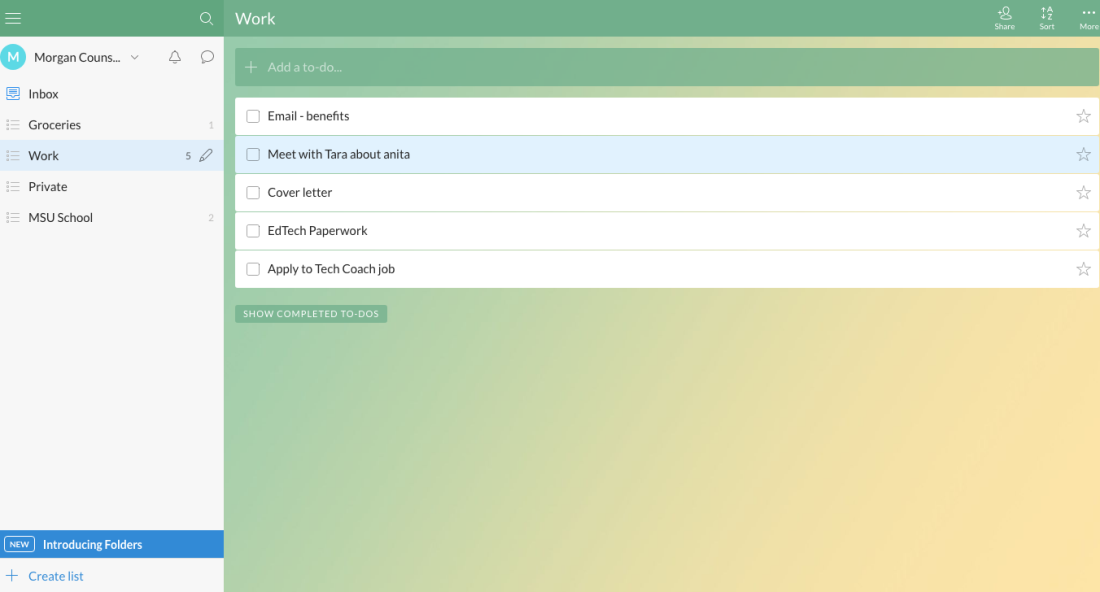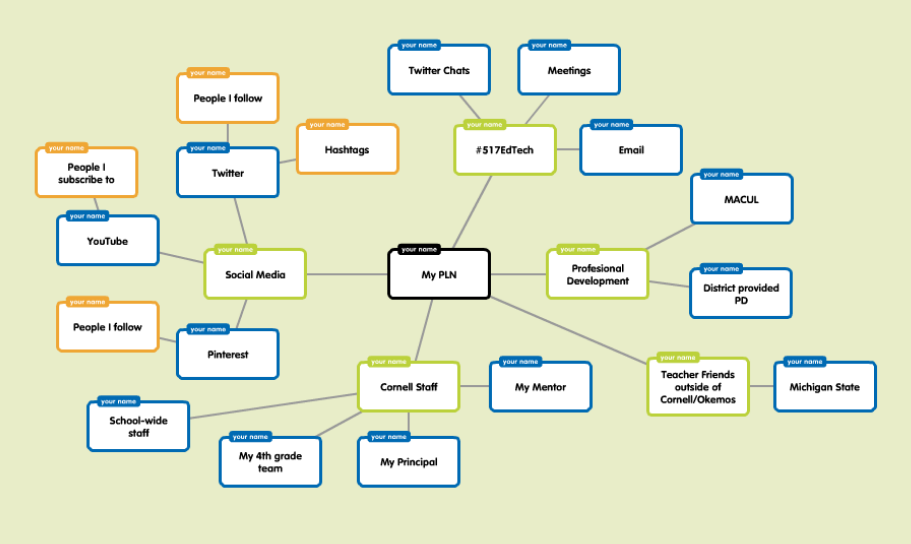David Allen, the author of Getting Things Done: The Art of Stress-Free Productivity (2001), believes that people need to be appropriately engaged in what they’re doing in order to get it done. He says that we need to stop keeping thoughts and lists in our heads and put them down on paper so that we leave space for our psychic bandwidth and space to think. Allen says there are three key principles for GTD:
- Capture Thinking (write everything down)
- Make outcome/action decisions
- Use the right maps
I discovered a resource this week that would allow me to follow these 3 principles and hat is Wunderlist. This is a wonderful resource that allows me to free up the space in my mind by writing down to-do list items instead of constantly thinking back to what I need to do. I began using this app on a Monday and by Friday I realized that using this list helped me to sleep better, relax in the morning before school, and allow myself to be mentally calm during my planning period. Knowing that I had this list of things I had to do and that I was not going to forget something was extremely relieving.
Here is an example of what a list I had looked like on Friday:

I selected the check box when a task was completed and then the item disappeared. I could also star the more important tasks so that I knew what needed to be a priority. I also liked that I could create multiple lists in different contexts (groceries, MSU, private, work, etc.). It was nice to open my work list and not also see my grocery list because groceries are irrelevant when I am at work. The only thing I wish this app would offer is the ability to give reminders to each task. I would have liked to put events in here and have an alarm go off when it was closer to that event. Otherwise, this app is something I will continue to use in the future!


